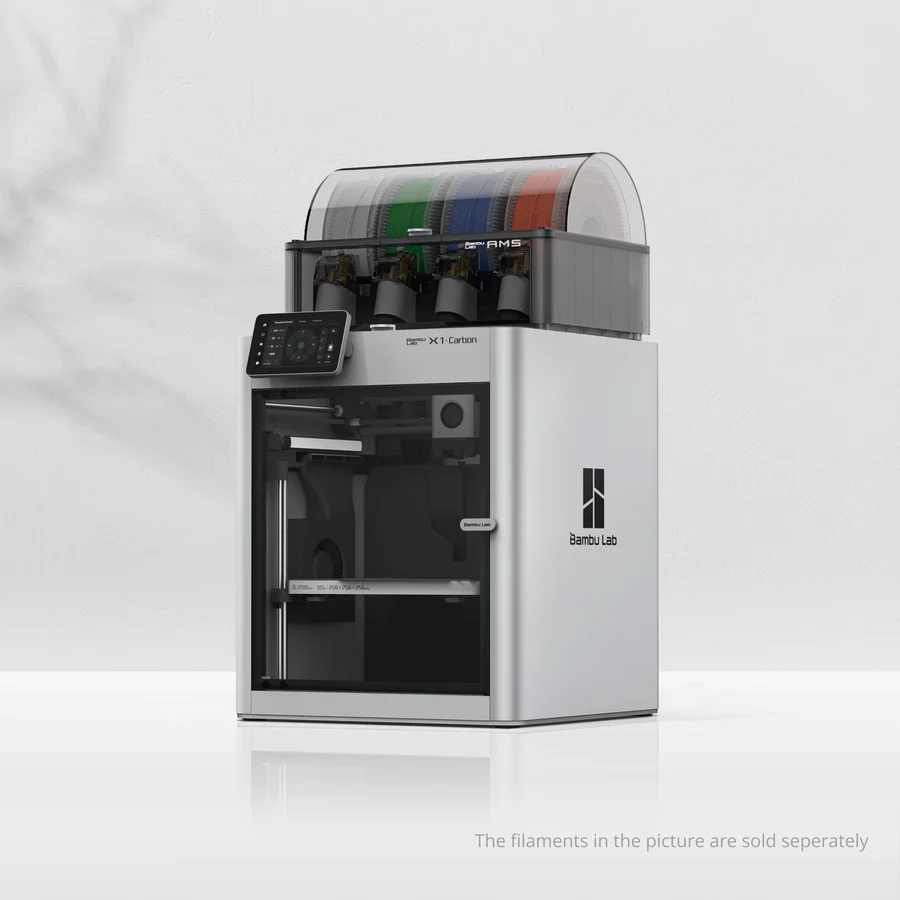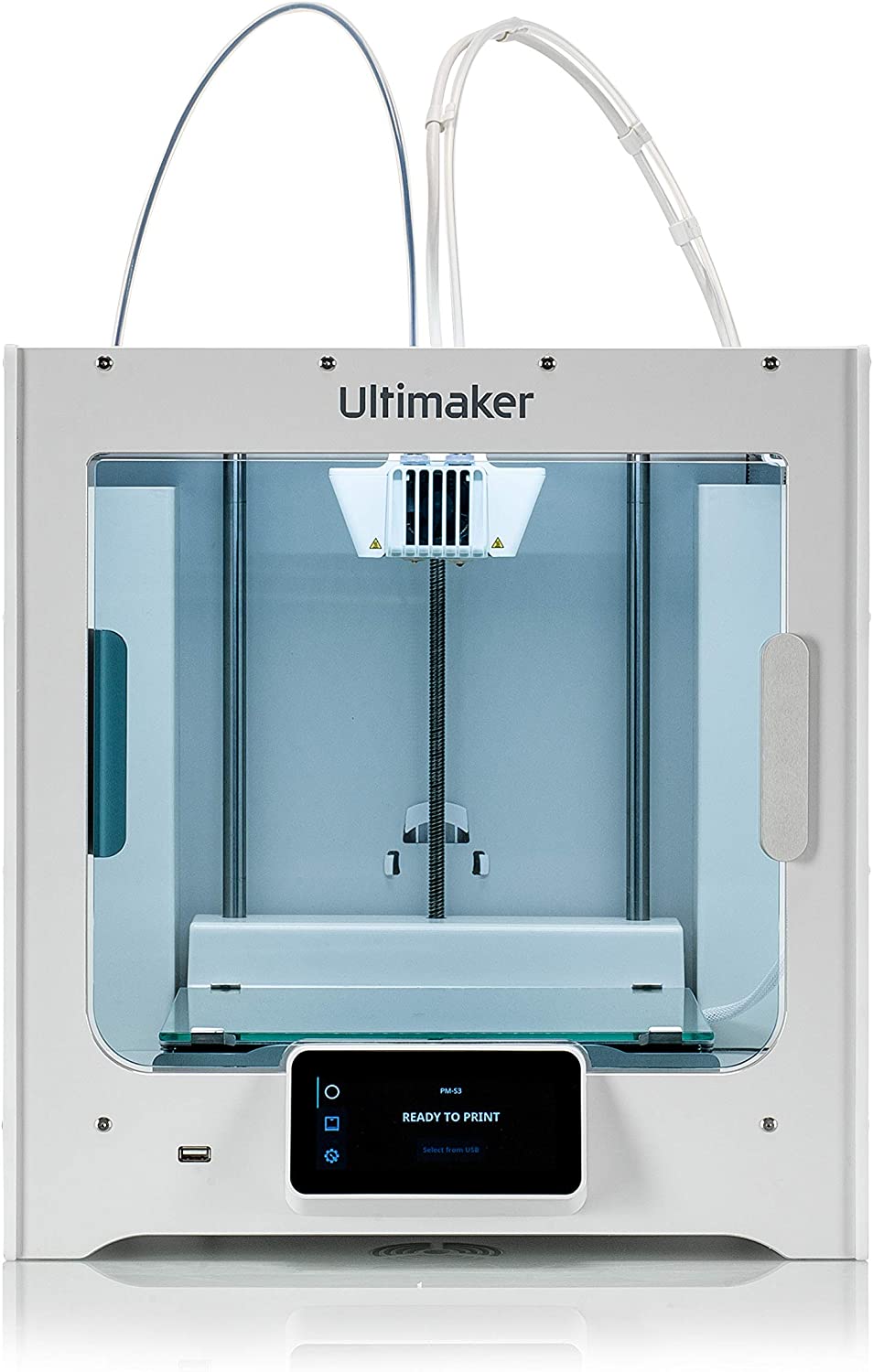Compare X1 carbon vs S5
Comparison between the best 3D printers
Choose the best 3D printer at the best price. The cheapest 3D printers are here.
Buy a 3D printer here with 3D Fila.
 |
 |
|
| Model | X1 carbon |
S5 |
| Printing Material | Filament | Filament |
| Buy Filament for Bambu Lab X1 carbon | Buy Filament forUltimaker S5 | |
| Estimated price | $1449,00 | $6950,00 |
| Manufacturer | Bambu Lab | Ultimaker |
| Release Year | 2023 | 2021 |
| Print Volume [mm] | 256x256x256 | 330x340x300 |
| Printer Size [mm] | 389x389x457 | 495x585x780 |
| Weight [kg] | 14,13 | 20,6 |
| Power Loss Recovery | YES | YES |
| Enclosed printer | YES | YES |
| Bed Leveling | Automatic | Automatic |
| Filament End Sensor | YES | YES |
| Bed type | Heated | Heated |
| Power supply system | Direct Drive | Bowden |
| Standard nozzle | 0,4 | 0,4 |
| Maximum Nozzle Temperature [°C] | 300 | 280 |
| Maximum Bed Temperature [°C] | 120 | 140 |
| Maximum printing speed [mm/s] | 500 | 80 |
| Filament holder | YES | YES |
| Camera for supervision | YES | YES |
| Recommended filaments | PLA, PETG, TPU, PVA, PA, PA-CF, Nylon, PC | PLA, ABS, PETG, PC, Nylon, Tritan |
| Recommended slicers | Bambu Studio, Super Slicer, Cura, Prusa Slicer, Orca | Cura |
| Maximum Resolution [mm] | 0,1 | 0,1 |
| Processor | Quad ARM A7 1.2 GHz | |
| Display | Touchscreen 5'' | Display touchscreen 4,7'' |
| Power Supply | 350 W | 110/220V / 500W |
| Connectivity | Wifi, Bambu bus, Cartão SD | USB / Wi-Fi |
| Operating systems | Windows, Linux, Macbook | Windows, Mac, Linux |
| Date of registration in the system | 2024-04-10 | 2022-11-08 |
| Release date | 2023 | 2021 |
| Extra features | The Bambu Lab X1 Carbon revolutionizes 3D printing with stunning design, high print speeds, and a streamlined user experience. It stands out with its CoreXY system, a hotend capable of reaching 300°C, allowing for a wide range of filaments. Its LiDAR-assisted bed leveling system, vibration compensation, and AMS multicolor printing capability raise the industry standard. Print quality is impressive, with the ability to fine-tune for perfection. The X1 Carbon, with its closed build volume, not only promises but also delivers one of the most advanced 3D printing experiences available to consumers. | The Ultimaker S5 stands out for its easy loading and unloading of materials, automatic bed leveling and excellent print quality with resolutions from 60 to 400 microns. It has dual extruders, interchangeable print cores, advanced connectivity with Wi-Fi and LAN, and intuitive software. It includes a Wi-Fi camera for monitoring, a removable glass bed, and a large build volume, making it ideal for professional and creative environments. |
| Support for multiple colors and materials (AMS and CFS) | YES | NO |
Notes * |
||
| Cost-benefit | 7 / 10 | 2 / 10 |
| Hardware | 6.4 / 10 | 3.6 / 10 |
| Tela | . | . |
| Print volume | 4 / 10 | 4 / 10 |
| Performance | 4 / 10 | 1 / 10 |
Conclusion |
| In conclusion, when comparing the Bambu Lab X1 Carbon and the Ultimaker S5, several key differences highlight their distinct advantages and suitability for different user needs. The X1 Carbon, with its lower price point and advanced features, such as high printing speed, a wide temperature range for the hotend, and the innovative AMS multicolor printing system, offers a modern solution for users looking for both performance and versatility. This printer excels in rapid production and fine-tuning, making it ideal for hobbyists and small businesses that prioritize quick turnarounds and a variety of materials. Conversely, the Ultimaker S5, while significantly more expensive, is tailored towards professional settings where reliability, build volume, and print quality are paramount. Its robust features, including dual extruders and advanced connectivity options, are designed for a more industrial or creative environment. The S5's automatic maintenance features, alongside a removable glass bed and support for various materials, provide a consistent and high-quality printing experience, even if at the expense of speed. Ultimately, potential buyers should weigh their specific requirements—whether they prioritize innovation and speed with the X1 Carbon or reliability and advanced features with the S5—before making a decision. The Bambu Lab X1 Carbon clearly stands out as offering better cost-effectiveness and performance for smaller scale applications, while the Ultimaker S5 suits larger, more demanding production environments. |

